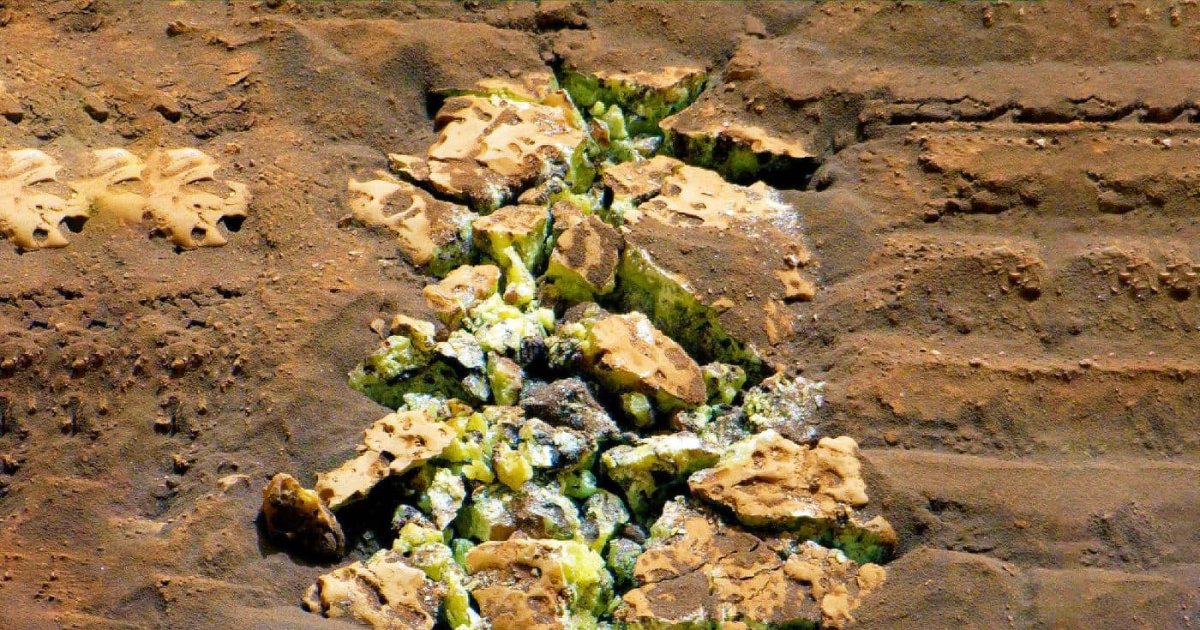NASA has discovered something on Mars that has never been seen before

Mars exploration is getting more and more exciting. NASA’s new discovery came as the Curiosty rover was climbing up the Gediz Valley, a mountain valley that runs across the side of Mount Sharp, and as it passed over some rocks, it was discovered that when they were broken, they had rare, bright sulfur crystals inside them. yellow. An unprecedented surprise inside the rocks. They were pure sulfur crystals!
NASA said scientists were “stunned” by the discovery. The presence of sulfates, a type of salt containing sulfur, is common in the Gale Crater region that Curiosity is exploring. “But while previous discoveries involved sulfur-based minerals — in other words, a mixture of sulfur and other materials — the rock Curiosity recently discovered is made of elemental, or pure, sulfur,” the space agency said in a press statement.
NASA has discovered something on Mars that has never been seen before
An unprecedented scientific discovery
When the rover’s cameras focused on what the robot had stumbled upon, scientists found strange yellow crystals glowing in the newly exposed rock. Pure sulfur had never been seen on our neighboring Red Planet before. Elemental sulfur crystals form only in a narrow range of conditions. And nothing like this was expected from this region of Mars. Scientists suspected that elemental sulfur might be somewhere on Mars, but were surprised to find it in rocks on the surface.
The unexpected discovery was relayed to a team of astonished scientists, including Ashwin Vasawada, Curiosity project scientist at NASA’s Jet Propulsion Laboratory in Southern California.

Yellow Treasure
What’s even more interesting is that the Gediz Valley channel where Curiosity found the rock is full of rocks very similar to those the rover crashed, suggesting that elemental sulfur may somehow be abundant in the area.
“Finding a field of pure sulfur rocks is like finding an oasis in the desert. It shouldn’t be there, so now we have to explain it. Finding weird and unexpected things is what makes planetary exploration so exciting,” Vasavada enthused in a press release from NASA’s Jet Propulsion Laboratory (JPL).
It is true that many aspects of Mars’ geological history remain a mystery to us. However, the discovery of large amounts of pure sulfur scattered across the surface of Mars hints at an important unknown that we have yet to discover.
Curiosity has been climbing this 5km-high Martian mountain since 2014, and each layer reveals secrets about the Red Planet’s watery past.
The yellow crystals were discovered when the rover explored a region rich in sulfur-based minerals called sulfates. These minerals form when water evaporates, leaving behind sulfur. In the past, the rover has found rocks containing sulfur, but they were usually mixed with other materials. This time, Curiosity cracked open the rock and found that it was made entirely of pure sulfur. What’s so special about this elemental, or pure, sulfur? Well, unlike the foul smell of hydrogen sulfide, elemental sulfur is odorless and smells like nothing.
Sulfur provides clues about Mars’ past interactions with water. This is important because water is a key ingredient for life. In fact, on Earth, these formations often indicate biological activity: microorganisms leave behind sulfur compounds as they metabolize. Sulfur compounds also reveal information about possible hydrothermal systems, volcanic activity, or ancient lakes and seas on Mars, habitats that could have supported life. That’s why the discovery is so exciting. The next step will be to figure out exactly how, based on what we know about Mars, the sulfur could have gotten there.
Sulfur has been detected on Mars before, but only when it combines with other elements in compounds known as sulfates.
There may have once been a river in the channel of this fascinating region. Curiosity’s goal is to find out whether Mars could have ever been habitable for microbial life. So far, it’s been a joy. Without going into too much detail, last May the rover found rocks containing manganese oxide, the best evidence to date that the Red Planet once had an oxygen-rich atmosphere similar to Earth’s.
Unfortunately, although Curiosity is a mobile laboratory with drilling capabilities, the sulfur crystals were too small and fragile for the rover to collect as samples for analysis; it took a sample of rock dust for chemical analysis. Curiosity landed in Gale Crater on Mars in 2012 and explored the base of Mount Sharp, the crater’s massive central mountain.
Mars
References:
- NASA’s Curiosity Rover Finds Surprise at Mars Jet Propulsion Laboratory
- Press release dated July 18, 2024
